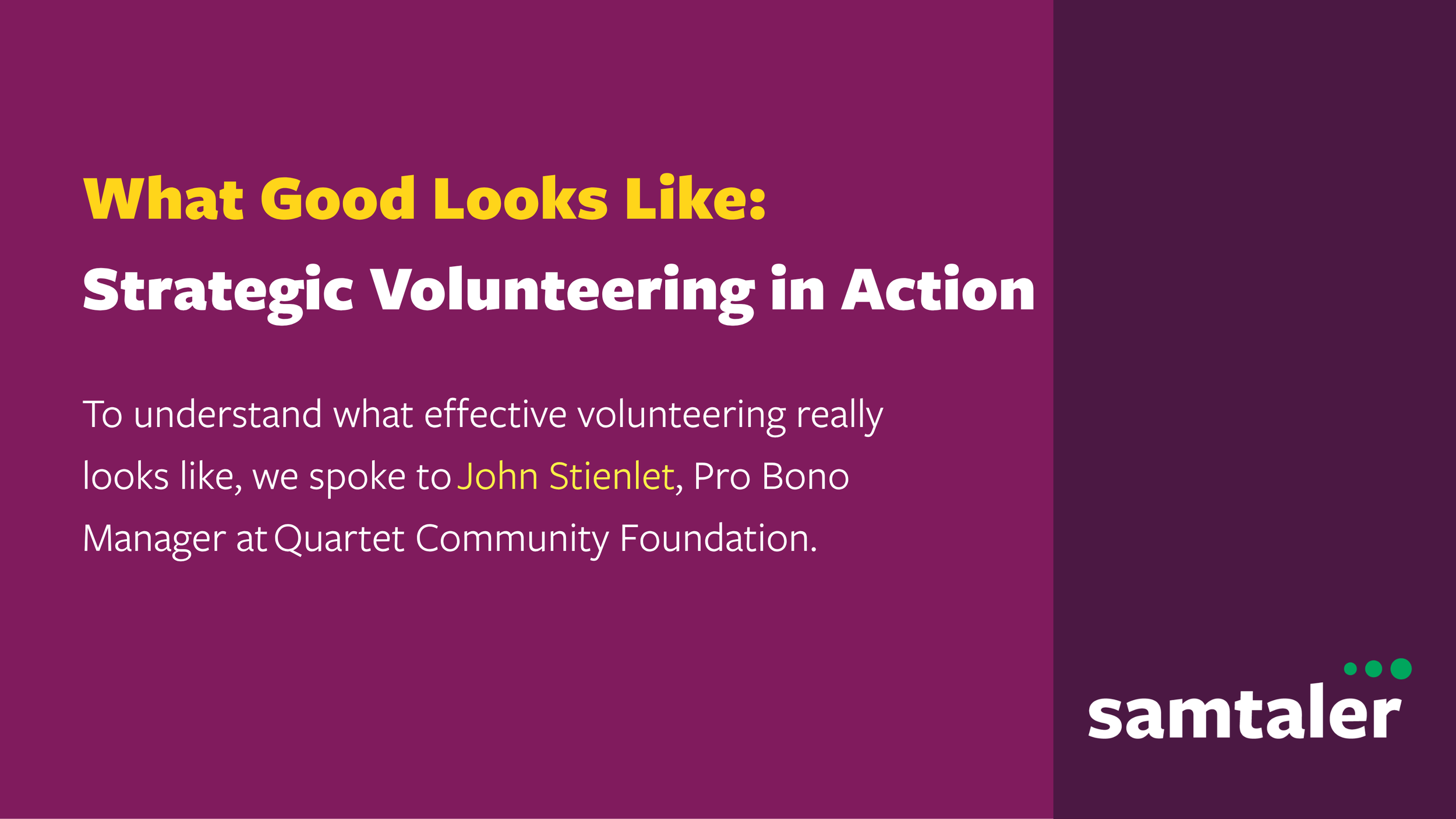The Pitfalls of Employee Volunteering: When Good Intentions Miss the Mark
By Tilly Crowhurst, Senior Social Value Consultant
Employee volunteering is full of potential, but good intentions alone don’t always translate to meaningful action. Let’s take a closer look at where things go wrong and how to get it right.
Maybe uptake is low. Finding it difficult to find the right charity or employer to align with? Or employees just don’t seem all that engaged. If this sounds familiar, you’re not alone.
1. A Policy That Limits, Not Enables
A business volunteering policy might be more restrictive than you realise. Think about:
Can volunteering only be done in teams?
Do employees have to use all their hours at once?
Are they limited to working with registered charities?
Is there any budget to cover travel or other small costs?
These seemingly small details can become real barriers. For example, reading with primary school children is a hugely valuable volunteering activity, but often excluded from policies because it’s solo, requires a DBS check, is ongoing, and not through a registered charity.
Charities, too, often need consistent support over one-off help. Many simply don’t have the capacity to host a group of volunteers for just one day. It’s worth going back to your policy and asking: does this open the door, or close it?
2. Volunteering as PR, Not Purpose
Employees, charities, and communities can see straight through token gestures.
If your volunteering efforts are more about photo ops than people, they’ll likely lack impact and engagement. Think of:
One-time litter picks with branded T-shirts that end up in landfill.
Painting the same community centre year after year.
Standalone events that are good for optics but disconnected from long-term change.
Volunteering should be about real need, not just feel-good moments.
3. When “Helping” Creates a Burden
Would you let an unpaid stranger walk into your office to help for the day, with no induction or training? Charities face this dilemma regularly.
When businesses show up with a team of volunteers and a ‘can-do’ attitude, they often underestimate the preparation needed. What was meant to help can become a burden, disrupt operations, and drain limited resources.
Some charities have developed structured programmes where businesses contribute financially to cover the cost of hosting volunteers. But often, what’s needed is simply better planning, clearer expectations, and mutual respect.
4. Poorly Matched Skills and Interests
Let’s face it, not everyone wants to plant trees or sort donations.
The most impactful volunteering happens when skills, passions, and purpose align. The legal sector, for example, has a strong tradition of pro bono work, skilled volunteering that meets both societal need and personal motivation.
Talk to your people. What causes matter to them? What skills could they bring to the table? A quick employee survey can go a long way in shaping opportunities that truly resonate.
5. Underestimating the Planning Required
A last-minute volunteering push rarely works. Like any meaningful business initiative, employee volunteering needs strategy, time, and the right partnerships.
Charities also need to be ready. They should know their capacity, be clear about what they need, and avoid overpromising. And above all, both sides need to build relationships.
What Good Looks Like: Strategic Volunteering in Action
To understand what effective volunteering really looks like, we spoke to John Stienlet, Pro Bono Manager at Quartet Community Foundation. John leads the ProHelp programme, which connects businesses with charities across the West of England to deliver skilled, strategic support.
For employers, John encourages a shift in mindset: treat volunteering as a strategic investment. That means thinking in terms of projects, not just an employee’s permitted volunteering hours, and allocating sufficient staff resources to complete the project. He also advises businesses to start by listening and getting to know the charity to assess what they might be able to offer. Listen first, offer later.
For charities, John’s message is equally clear: know your capacity, be responsive, avoid project creep – asking beyond what the business has agreed to help with, and be realistic about what you can deliver. He also encourages charities to offer value in return, whether that’s giving volunteers a new environment to test their skills or running a wellbeing session for staff. And above all, focus on building relationships. Get decision-makers to visit, see the work firsthand, and become champions for your cause.
“Let the business get to know you. Seeing is believing, get the decision-makers to visit your charity, inspire them, get their buy-in.”
Where to Start: Organisations That Can Help
If you’re looking to build or improve your skilled volunteering offer, these organisations can help:
Reach Volunteering – reachvolunteering.org.uk
Pilotlight – pilotlight.org.uk
Cranfield Trust – cranfieldtrust.org
Charterpath – charterpath.org.uk
Digital Candle – digitalcandle.org.uk
Quartet ProHelp – quartetcf.org.uk
Let’s Rethink How We Create Social Value
Employee volunteering can drive social value, strengthen communities, and boost employee satisfaction - but only when done with purpose, planning, and people at the centre.
Ready to optimise your approach? Let’s talk.
If you liked this post please share.





